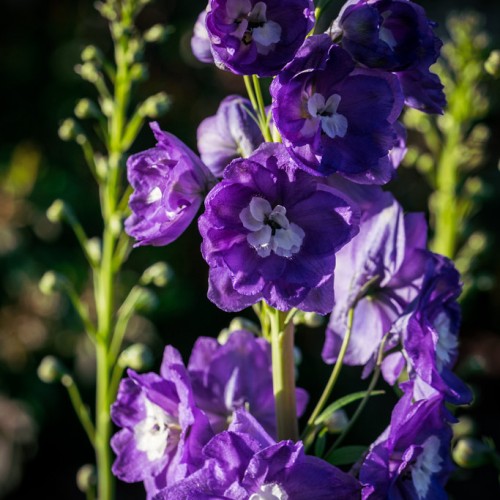
larkspur
Delphinium 'Fanfare'
Cycle:
Herbaceous Perennial
Watering:
Average
Hardiness Zone:
3 - 7
Flowers:
Flowers
Sun:
Full sun
Leaf:
Yes
Growth Rate:
High
Maintenance:
Moderate
Poisonous To Humans:
Yes
Poisonous To Pets:
Yes
Care Level:
Medium
watering
Larkspur (Delphinium 'Fanfare') should be watered 1 to 2 times per week, depending on the temperature and the amount of rain the plant receives. During the summer months, when temperatures are higher and there is less rain, water the plant more often. Avoid wetting the foliage and water the plant at the base of the stem. When watering, give the plant 1 to 2 inches of water, soaking the soil thoroughly and allowing the top half-inch of the soil to dry out between waterings.
sunlight
Larkspur (Delphinium 'Fanfare') should receive full sun for at least 6 hours per day for optimal growth. In cooler climates, more shade should be provided during the hottest part of the day, typically between 11am and 4pm. Larkspur will also benefit from receiving filtered sunlight for part of the day.
pruning
Larkspur (Delphinium 'Fanfare') should be pruned back after flowering to keep it blooming until fall. Each stem should be cut back to the basal foliage or to a side shoot just above a healthy bud. This will promote bushiness and keep it looking neat and tidy. If left unpruned, the plant may become leggy with few flowers, as the blooms tend to be located toward the tip of each stem. Deadheading should also take place throughout the growing season as blooms become spent. This is the most critical type of pruning for this plant, as it signals to the plant that it should continue to produce flowers.
